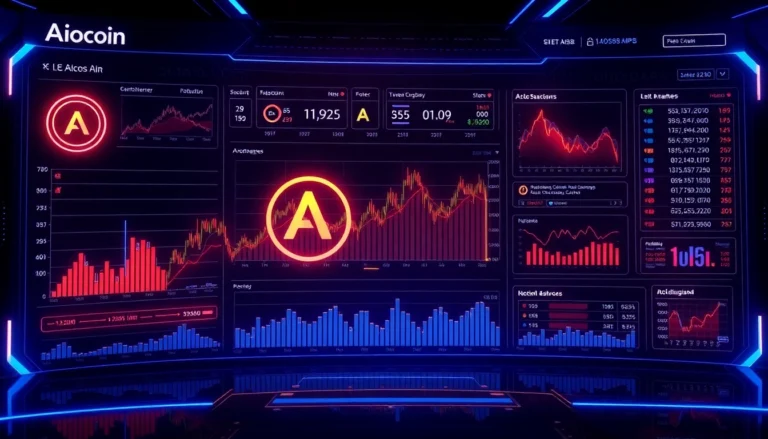Understanding Dumper Rental: Key Types and Uses
In construction, landscaping, and various industrial sectors across the UK, the efficient movement of bulk materials is a critical component of project success. From transporting soil and aggregate to debris removal and material handling, the choice of equipment significantly impacts productivity, safety, and cost management. Among the most versatile and essential machinery for these tasks is the dumper. Whether you need a compact micro dumper for narrow site access or a heavy-duty high tip dumper for large-scale operations, understanding the key types and their specific applications is vital for making informed rental decisions. For those seeking reliable, cost-effective solutions, exploring the options for dumper rental can help streamline your project workflows.
Mini and Micro Dumpers: Compact Power for Small-Scale Tasks
Mini and micro dumpers are the backbone of small to medium-sized construction and landscaping projects that require precise, localized material movement. These compact machines are designed to operate efficiently in confined spaces, such as narrow alleys, small building sites, or indoor areas where larger equipment cannot access. The micro dumper, typically weighing less than 1 ton and measuring around 1 meter in width, is ideal for maneuvering through doorways and tight gateways, providing excellent versatility. For example, Cyril Johnston Hire offers a micro dumper capable of navigating uneven or wet ground conditions, making it invaluable for tasks like garden landscaping or internal renovations.
Mini dumpers generally range from 0.25 to 1 ton capacity, featuring user-friendly controls and robust construction. Their design often includes a low centre of gravity to ensure stability during tipping and loading operations. The key advantage of these models is their ability to quickly shift building materials, aggregates, or waste within a small footprint, reducing the need for manual labour and increasing speed. Notable examples include the petrol mini dumper from Brandon Hire Station, capable of moving up to 300kg per load, and the 0.25-ton models available from HSS.com.
Applications include landscaping projects, small residential developments, and indoor construction where space is limited. Their ease of operation, combined with versatile attributes like tipping into low-sided skips or navigating confined pathways, renders them indispensable for tasks requiring careful handling of materials.
Standard and High Tip Dumpers: Heavy-Duty Options for Large Loads
For larger-scale operations involving substantial material loads, standard and high tip dumpers offer high capacity and robust functionality. These machines typically range from 1 to 3 tons in capacity and are equipped with powerful engines and reinforced frames designed for demanding environments. The high tip models, such as a 1-ton high tip dumper, provide the ability to unload materials directly into higher storage sites or large containers, minimizing the need for additional handling equipment.
Standard dumpers excel in tasks like excavation, site clearance, and bulk material transport over relatively flat terrain. Their tipping mechanisms facilitate quick unloading, greatly improving efficiency on busy construction sites. For example, the 1-ton high tip dumper available from Balloo Hire can easily handle the movement of heavy materials with minimal manual effort, boosting productivity and reducing labour costs.
These dumpers are often fitted with features such as articulated steering for enhanced maneuverability or swivel skip options for precise placement. They are suitable for applications where large volumes of loose material need to be moved rapidly, including site leveling, bulk earthworks, and loading operations in quarrying and infrastructure projects.
Tracked and Articulated Dumpers: Navigating Difficult Terrain Efficiently
Where ground conditions are challenging—such as muddy, uneven, or steep terrain—tracked and articulated dumpers come into their own. Tracked dumpers feature caterpillar tracks that distribute weight evenly, providing superior stability and traction. They are designed for off-road and rough terrain conditions, making them ideal for landscape renovations, forestry, and construction in variable environments.
Articulated dumpers, on the other hand, are distinguished by their pivot joint between the chassis and the dump body, offering unmatched maneuverability. This feature enables these machines to traverse narrow paths and sharp turns, often in off-road conditions where rigid vehicles would struggle. Their robust construction permits carrying large loads over difficult terrains with minimal risk of getting stuck or tipping.
For example, large infrastructure projects or forestry operations requiring the transport of excavated soil, rocks, or timber over rough and steep grounds often utilize articulated and tracked dumpers. Their ability to maintain mobility and stability under tough conditions ensures timely project progression, minimizes delays, and enhances safety.
Factors to Consider When Renting a Dumper
Load Capacity and Size Suitability for Your Project
Choosing the right dumper begins with accurately assessing your project’s load requirements. Overestimating capacity may lead to equipment underutilization and unnecessary costs, while underestimating can hamper productivity and cause operational delays. For small landscaping jobs or indoor renovation, mini or micro dumpers with capacities under 1 ton are sufficient, offering easy handling and maneuverability. Conversely, large civil engineering projects may necessitate 3-ton or greater dumpers to move bulk materials efficiently.
Ground Conditions and Terrain Compatibility
Evaluate the terrain of your site—flat, uneven, muddy, or rocky—and select a dumper equipped to handle those conditions. Tracked or articulated dumpers are preferred for rough or challenging terrain, providing stability and traction. For smooth, compacted surfaces, standard rear-tipping dumpers are adequate. Selecting machinery aligned with ground conditions reduces risk of equipment damage and enhances operational safety.
Rental Duration and Cost Optimization Strategies
Define your project timeline to optimize rental periods. Longer-term rentals often benefit from discounted rates, reducing overall costs. Planning ahead also minimizes rental extensions or last-minute charges. Additionally, consider pairing rental with optional operator services—professional operators can maximize machine efficiency and safety but may influence rental pricing. An accurate assessment ensures right-sized equipment deployment, avoiding overpayment or underutilization.
Benefits of Choosing Professional Dumper Rental Services
Quality Equipment and Safety Standards
Professional rental providers prioritize high-quality, well-maintained equipment that complies with current safety regulations. Regular inspections, servicing, and adherence to safety standards help prevent mechanical failures and accidents, safeguarding your workforce. Rental companies with rigorous maintenance regimes often provide detailed operational manuals, safety instructions, and 최신 safety features on their machinery, ensuring optimal performance and compliance.
Expert Advice and Tailored Solutions
Reputable suppliers employ experienced staff ready to guide you on selecting the best equipment for your specific needs. They analyze your project scope, ground conditions, and operational constraints to recommend suitable models and optional attachments or accessories. This personalized approach results in more efficient operations, reduces downtime, and minimizes unforeseen issues.
Flexible Rental Terms and Comprehensive Support
Many companies offer flexible rental periods, delivery and pickup services, and on-site support. Access to technical assistance or operational guidance during your rental period can streamline your workflow. Furthermore, flexible terms accommodate ongoing project adjustments, helping you avoid extended costs and plan resource allocation more effectively.
Step-by-Step Guide to Renting a Dumper
Assessing Project Needs and Selecting the Right Dumper
Start by conducting a comprehensive assessment of your project requirements: determine the total expected load, site terrain, space constraints, and duration. Use this information to select a suitable dumper type—micro, mini, standard, or articulated—ensuring it matches your operational parameters. Engage with rental providers for detailed advice, and consider what attachments or additional features may enhance efficiency.
Booking Procedures and Delivery Logistics
Once you’ve identified the appropriate equipment, proceed with the booking process—most rental companies allow online reservations or direct calls. Confirm delivery schedules, locations, and any logistical considerations such as site access or restricted areas. Ensure the rental agreement clearly specifies maintenance responsibilities, safety protocols, and the duration of hire. Opt for providers who offer flexible delivery and collection options to align with your project timeline.
Operational Tips for Maximizing Efficiency and Safety
Prioritize operator training—whether by hiring licensed operators or receiving vendor-led instruction. Always adhere to safety guidelines, including wearing protective gear and maintaining clearance zones. Conduct pre-operation checks for fluid levels, brakes, and controls. Use the dumper within its rated capacity to prevent tipping or mechanical strain. Regularly inspect the equipment during use and report any issues promptly to ensure continuous safe operation.
Measuring Success: Performance Metrics for Dumper Rentals
Speed and Efficiency Improvements in Material Transport
Tracking the volume of material moved per hour and comparing it against baseline manual methods offers tangible evidence of operational efficiencies. For example, introducing a suitable dumper can reduce manual labour hours by up to 50% and increase daily throughput, directly impacting project timelines.
Cost Savings and Rental ROI Analysis
Calculate the return on investment by evaluating productivity gains versus rental costs. Efficient equipment decreases labour needs, reduces project duration, and minimizes occupational health and safety risks, leading to overall cost savings. Regular assessment helps justify rental expenses and supports future procurement decisions.
Feedback and Maintenance for Optimal Use
Gather user feedback to identify operational bottlenecks or equipment issues. Implement routine maintenance schedules based on manufacturer guidelines to prolong machine lifespan and maintain peak performance. Clear documentation of operational history aids in troubleshooting and planning preventative maintenance for future rentals.








